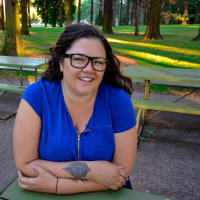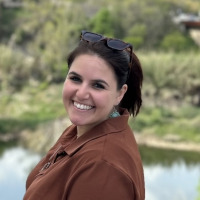Reading Time: 10 minutes

Rural substance misuse has been on the rise in recent years, with overdose deaths surpassing urban areas, but these communities have been overlooked in favor of the impactful headlines of addiction ravaging — particularly around the opioid crisis — major cities across the nation. While the media presents addiction to be concentrated in inner cities, research shows that substance use and misuse have long been prevalent in rural areas. Public health experts say the lack of recovery resources for rural communities makes addiction especially hard to combat. This guide provides an overview of substance misuse in rural communities, including key statistics, the unique challenges faced by rural populations, and a substantial list of rural substance misuse support resources.
Understanding substance misuse in rural areas
Experts say that substance use and misuse in rural areas is a problem, with certain substances being consumed at higher rates than in cities. There are several factors that contribute to higher rates of substance misuse in rural areas, which we’ll explore in more detail.
Statistics and prevalence of substance misuse in rural settings
Public health expert bodies, such as the Substance Abuse and Mental Health Services Administration’s (SAMHSA) 2022 National Survey on Drug Use and Health, the Rural Health Information Hub, and the Centers for Disease Control and Prevention, demonstrate startling statistics about the prevalence of substance misuse in rural settings:
- Opioid use: rural opioid use, like heroin, is marginally less than cities, with 3.0 percent of rural areas reporting opioid use, compared to 3.2 percent in cities. However, small towns used opioids at the same rate
- Rural fentanyl use: use of fentanyl in rural areas remains lower than in urban areas, with 14.3 percent of rural counties using fentanyl, compared to 18.3 percent in cities. However, it is potentially more deadly (see opioid overdose deaths)
- Opioid overdose deaths:
- Was higher for females in rural counties
- Deaths involving semisynthetic opioids were 13 percent higher than urban counties (4.5 percent compared to 4 percent)
- Eight states had higher rates of drug overdose, including CA, NV, NH, OH, OK, OR, SD, UT, WA, and WY
- Rural alcohol misuse: alcohol misuse is a common problem among adults and adolescents:
- Rural high school students are more likely to participate in binge drinking, with binge alcohol use at 8.7 percent among students in rural areas, compared to 7.7 percent in metro areas
- Alcohol use by youths (aged 12-20) was reported at 28.8 percent in non-metro areas, 29.4 percent in small metro areas, compared with 27.5 percent in urban areas
- Tobacco use: was also higher in non-metro (rural areas and small towns) areas with 31.8 percent of 18 to 25 year old’s using tobacco, compared to 22 percent in large metro areas (cities).
- Methamphetamine use: is also higher, with 1.6 percent of non-metro areas using meth, compared to 0.8 percent in large metro areas
- Deaths involving psychostimulants: the misuse potential was 31 percent higher in rural areas (9.4 percent) than in urban areas (7.2 percent).
Impact on individuals and communities
The CDC recently reported that drug overdose deaths in rural areas have now surpassed rates in urban areas. While drug use in some areas is lower, the effects are greater with the number of individuals reporting illicit drug use being like large metropolitan areas. According to the CDC, in 2015, the rural overdose death rate had been higher than the urban rate since 2006.
The impact is greater for several reasons:
- Most overdose deaths occur in homes where relatives and loved ones have limited knowledge about life-saving drug Narcan, the opioid overdose reversal drug
- Access to Narcan is limited with some states still failing to pass Good Samaritan laws
- Limited access to treatment, if any, with treatment facilities being sparse and miles away from the person’s home
- Most rural admissions are criminal justice-related (51.6 percent versus 28.4 percent), than self-referral (22.8 percent).
- Treatment like medication-assisted treatment is limited due to the need for healthcare providers to receive a DEA and SAMHSA waiver, and a shortage of physicians who administer MAT. In 2016, 60.1 percent of rural areas still had no waivered providers
- There are limited recovery resources
- Substance use disorders are linked to increased criminal justice involvement, with higher instances of crime
- Social health consequences, due to the greater stigma associated with substance use, and the association of substance use in adults linked to negative impacts on children and fetuses
- Lack of training among first responders to deal with the effects of substance use
Unique challenges faced by rural populations
There are several factors contributing to rural substance misuse, including:
- Poverty
- Low educational attainment
- Lack of access to mental healthcare
- Isolation
- A sense of hopelessness
- Unemployment
- Distance to help, with individuals having to travel long distances to limited treatment facilities, and they may not have transportation
- Little to no mental health and detox services readily available
- Lack of access to technology to access digital addiction treatment services
- The cost of treatment, with many rural populations facing unemployment and poverty may mean a lack of insurance and the financial means to pay for treatment
- Fear of discrimination among LBTQIA individuals
Signs of substance misuse in rural settings
Individuals often hide substance misuse or downplay their problem for a while. It can come as a surprise to family members when loved ones seek help. However, there are warning signs to look out for if you are worried about a friend or family member misusing substances:
- Unusual smell on their breath or body
- Changes to eyes: bloodshot or small/larger pupils
- Sudden weight loss or weight gain
- Slurred speech
- Runny nose or sniffing
- Deterioration in appearance
- Acting secretively
- Financial problems or asking to borrow money
- Legal concerns
- Not following through with responsibilities
- Using more frequently, or seeing signs of more consumption like more bottles/hidden containers
- Taking time off work or school
- Social isolation
- Loss of interest in activities they once enjoyed
- Mood swings: irritability, angry outbursts, or attitude
- Increased nervousness or anxiety
- Paranoia
- Seeming tired or spaced out
Recovery resources for rural communities
While this list provides mental health, addiction treatment, and other resources for rural communities, many of these organizations are national. Meaning, they can be accessed 24 hours a day, seven days a week, which may not be available locally due to limited resources in rural areas. These organizations can help you find community-based support and guidance on locating and joining local support groups.
Helplines & online services
These helplines help to prioritize rural patients and those with marginalized identities, who are often unsupported in rural locations.
- SAMHSA: This national helpline provides free, confidential, 24/7 treatment referral support for individuals across the nation (including rural areas). Call 1-800-662-4357
- Farmer-specific resources: mental health resources & hotlines for every state in the US and Canada
- LGBTQ Resources: while not specific to rural areas, these national helplines can be reached 24/7 and provide support for LGBTQ individuals who live in rural areas (you can also access our LGBTQ Addiction & Mental Health Resources Guide):
- LGBT National Help Center: This center serves gay, lesbian, bisexual, transgender and questioning people with free and confidential peer-support and local resources.
- LGBT National Hotline: 888-843-4564
- LGBT National Youth Talkline: 800-246-7743
- LGBT National Senior Hotline: 888-234-7243
- Trans Lifeline: This grassroots hotline provides direct emotional and financial support to trans people in crisis. It offers peer support for trans individuals given by trans individuals
- The Trevor Project: This organization provides confidential support for LGBTQ+ youth in crisis, 24 hours a day, 7 days a week:
- TrevorLifeline 866-4-U-TREVOR (1-866-488-7386): Crisis intervention and suicide prevention phone service available 24/7/365
- TrevorChat: Confidential online instant messaging with a Trevor counselor, available 24/7. Access via computer.
- TrevorText – Text START to 678-678: Confidential text messaging with a Trevor counselor, available 24/7/365. Standard messaging rates may apply
- LGBT National Help Center: This center serves gay, lesbian, bisexual, transgender and questioning people with free and confidential peer-support and local resources.
- Al-Anon and Ala-Teen: peer-based support for teens and adults of loved ones struggling with substance use. Call 1-800-356-9996.
- Drugfree.org: education, support, and guidance about substance use and what to do next. Call 855-378-4373, or text 55753
- National Alliance on Mental Illness: provides support, resources, and guidance on mental health and conditions. Call 1-800-950-6264, or text “Helpline” to 62640
- Suicide and Crisis Lifeline: Supports individuals in crisis or emotional distress and provides suicide prevention guidance. Call or text 988
Treatment locator
- The Substance Abuse and Mental Health Services Administration has a national addiction treatment locator tool, to find a treatment facility across the nation
- You can also find more specific identity and cultural treatment locators via:
- Wellbriety Certified Treatment Centers
- LGBTQ National Help Center
- Indian Health Service: alcohol and substance abuse program
- Trans Lifeline
Rural support groups
Virtual and in-person meeting groups:
- SMART Recovery: a mutual-aid support group available online and across the country
- Alcoholics Anonymous: a free 12-step recovery group (even in rural areas) available in-person and online
- Harm Reduction Works: a virtual support group to foster recovery community support and reduce the harm of substance use
- SHE RECOVERS: an online support group for women
- Wellbriety: in-person and online meetings for Native American/Alaskan Native community nationwide.
- Nurses Helping Nurses: a peer support group for nurses
- Celebrate Recovery (Christian-based)
- Women for Sobriety (female-only)
- Refuge Recovery (Buddhist-based)
- Wellbriety (Indigenous/Native American)
- LifeRing Non-Secular Recovery
- Collegiate Recovery (supporting those in education)
- Students Recover: online support for individuals in education seeking recovery, serving minority institutions, community colleges, and trade schools
Virtual peer support services
Peer support is a critical component of finding and sustaining recovery from addiction. Peers are individuals with lived experience of addiction and recovery. You can find peer support in recovery meetings and in professional peer services, like those listed below. Certified peers have been through a peer training program and have been credentialed by the state. Peers can help with recovery planning, setting goals, and accessing resources.
- RecoveryLink: a nationwide network of peer support workers and digital recovery meetings
- WeConnect Health: national online peer support that helps individuals build healthy routines and access meetings
State specific rural recovery resources:
Many of these resources will include information on financial assistance or insurance guidance for addiction treatment in rural communities.
- Arkansas Community Mental Health: a directory of mental health centers serving 12 areas in the state
- Southern Colorado Opioid Recovery: a state-funded program for MAT in Southern Colorado
- Idaho: a list of the state’s rural health facilities
- Massachusetts:
- Rural Recovery Resources in Great Barrington MA: coaching, peer support, and referrals.
- The Recover Project of Franklin County is a community-based recovery center providing peer support and resources
- Montana: The Montana Warm Line: a toll-free peer support hotline designed to support people in rural settings by connecting them with peer support specialists
- Pennsylvania: The Armstrong-Indiana-Clarion Drug and Alcohol Commission’s Nurse Navigator and Recovery Specialist Outreach Program in Shelocta, Pennsylvania, has used the CHW model to provide case management services by pairing peer recovery specialists and registered nurses to help patients navigate SUDs.
- Michigan: The Marquette County Peer Recovery Services provides peer recovery support services including peer mentoring and coaching, resource connecting, facilitating recovery groups, and building a safe community for members. The drop-in center is in Marquette, Michigan, but serves multiple counties in Michigan’s Upper Peninsula
- Mississippi Health Facilities: a list of rural health facilities
- New York: Seneca Strong’s Certified Addiction Recovery Coaches – Provides a cultural recovery peer advocate program, with the goal of reducing substance misuse across the Seneca Nation
- North Carolina: a list of safety net sites, including rural health clinics and critical access hospitals
- Ohio: a directory to find local health clinics and services
- Kentucky: Community Action Commission of Fayette County Faith in Recovery
Coalition: Provides a detox facility, inpatient treatment, and recovery housing via a collaboration between the government, a nonprofit, and faith-based organizations
- Great Lakes Rural Opioid Technical Assistance Regional Center: provides rural and indigenous mental health and substance use support and resources in rural Kentucky, Ohio, West Virginia, Georgia, Tennessee, Mississippi, Washington, Oregon, Montana, and Idaho
- Northeast Rural Opioid Technical Assistance Regional Center: training, education, and resources for individuals and organizations in Connecticut, Maine, Massachusetts, New Hampshire, Rhode Island, and Vermont
- Northwest Rural Opioid Technical Assistance Collaborative: training, resources, prevention, and treatment information for individuals in Alaska, Idaho, Oregon, and Washington
- Pacific Southwest Rural Opioid Technical Assistance Regional Center: Offers training, resources, and technical assistance on rural opioid and stimulant misuse in Arizona, California, Hawaii, Nevada, and the Pacific
- US Rural Hospital List: a list of urban and rural hospitals, including acute and specialty hospitals
- Addiction Recovery Mobile Outreach Team (ARMOT) – Provides case management and recovery support services to individuals with SUD and education and support to rural hospital staff, patients, and their loved ones
You can also access links to every state’s Rural Health Plan, via the Rural Health Information Hub, which includes information about their plan, vision, resources, accessibility, and health services.
Telehealth for substance misuse
Telehealth options are critical for individuals in rural areas seeking treatment for addiction. They can provide immediate access to treatment that might otherwise take time and travel to access. Telehealth treatment includes:
- Individual and group therapy
- Medication management
- Recovery support groups
- Doctors’ visits
- Outpatient detoxification
Not all telehealth providers require an internet connection and could provide text-based, or telephone support. Many of these providers now have mobile apps, enabling individuals to access treatment at the touch of their phone, monitor progress in real-time, receive text support, and even a virtual recovery community.
Support systems for loved ones
If you are the friend or family member of someone struggling with addiction, know you are not alone. There are millions of Americans who support individuals seeking and maintaining their recovery. There are several ways you can show your support:
- Educate yourself about addiction as a chronic mental health condition
- Learn ways to communicate with compassion and empathy
- Know that you cannot control when they seek treatment, but you can support them and set healthy boundaries
- You can find support for yourself through communities like Al-Anon and Ala-Teen
Recognizing the need for professional help
Substance use disorder is a chronic condition that can be fatal. If a person has been using substances regularly, using higher risk drugs like opioids, or alcohol, it is important that they seek professional help to discuss the appropriate treatment options under the guidance of a medical support team.
While living in a rural area does present unique challenges and limited treatment options, there is help available. People find recovery every day in the face of numerous barriers. With the right support, resources, and appropriate treatment it is possible to find recovery in rural areas and small towns. Reach out today if you, or your loved one, needs support.


